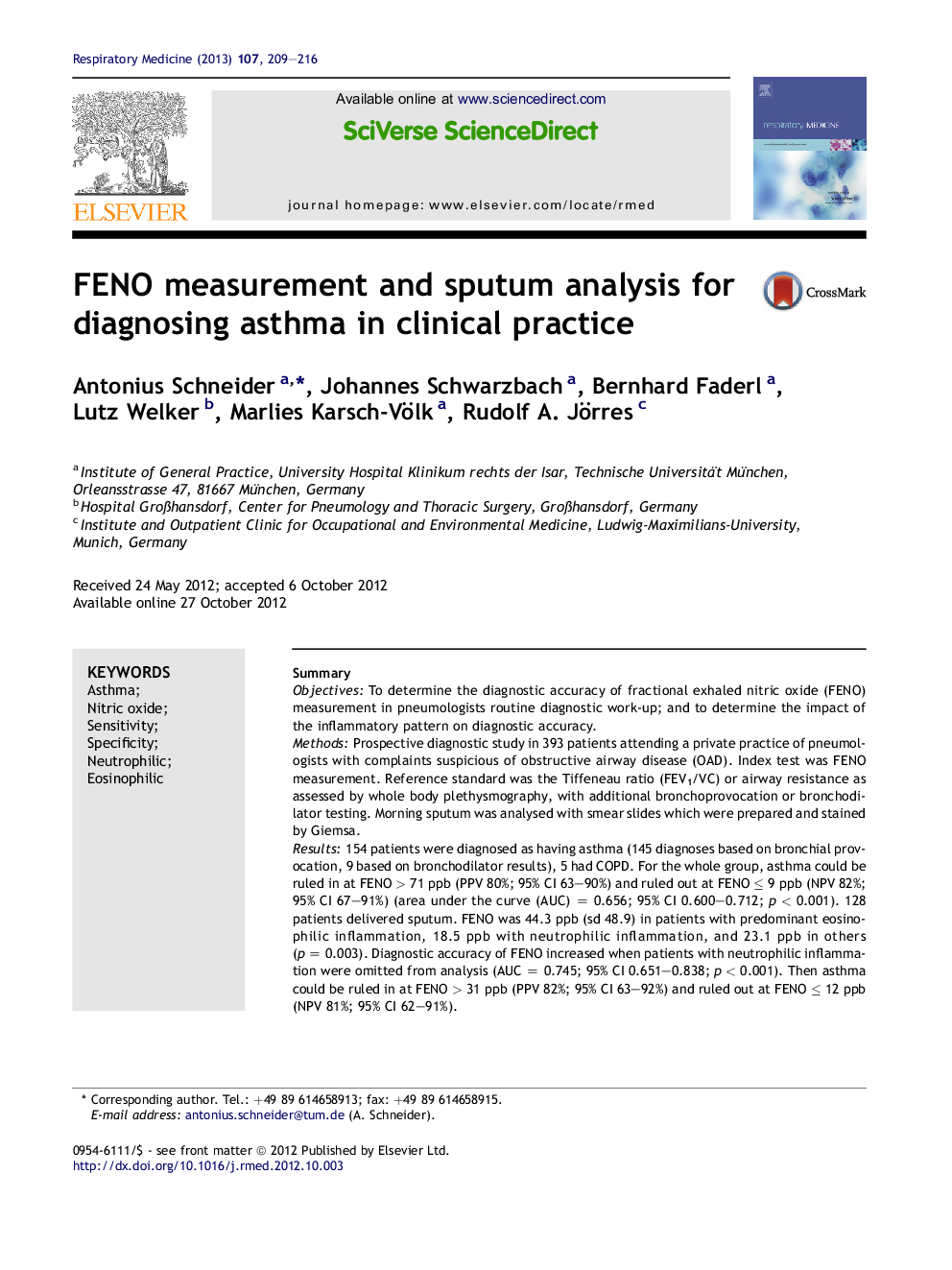| Article ID | Journal | Published Year | Pages | File Type |
|---|---|---|---|---|
| 4210682 | Respiratory Medicine | 2013 | 8 Pages |
SummaryObjectivesTo determine the diagnostic accuracy of fractional exhaled nitric oxide (FENO) measurement in pneumologists routine diagnostic work-up; and to determine the impact of the inflammatory pattern on diagnostic accuracy.MethodsProspective diagnostic study in 393 patients attending a private practice of pneumologists with complaints suspicious of obstructive airway disease (OAD). Index test was FENO measurement. Reference standard was the Tiffeneau ratio (FEV1/VC) or airway resistance as assessed by whole body plethysmography, with additional bronchoprovocation or bronchodilator testing. Morning sputum was analysed with smear slides which were prepared and stained by Giemsa.Results154 patients were diagnosed as having asthma (145 diagnoses based on bronchial provocation, 9 based on bronchodilator results), 5 had COPD. For the whole group, asthma could be ruled in at FENO > 71 ppb (PPV 80%; 95% CI 63–90%) and ruled out at FENO ≤ 9 ppb (NPV 82%; 95% CI 67–91%) (area under the curve (AUC) = 0.656; 95% CI 0.600–0.712; p < 0.001). 128 patients delivered sputum. FENO was 44.3 ppb (sd 48.9) in patients with predominant eosinophilic inflammation, 18.5 ppb with neutrophilic inflammation, and 23.1 ppb in others (p = 0.003). Diagnostic accuracy of FENO increased when patients with neutrophilic inflammation were omitted from analysis (AUC = 0.745; 95% CI 0.651–0.838; p < 0.001). Then asthma could be ruled in at FENO > 31 ppb (PPV 82%; 95% CI 63–92%) and ruled out at FENO ≤ 12 ppb (NPV 81%; 95% CI 62–91%).ConclusionsFENO measurement can be useful as an additional diagnostic tool in pneumologists' practice. The diagnostic value of FENO could be improved when inflammatory patterns are taken into account.
